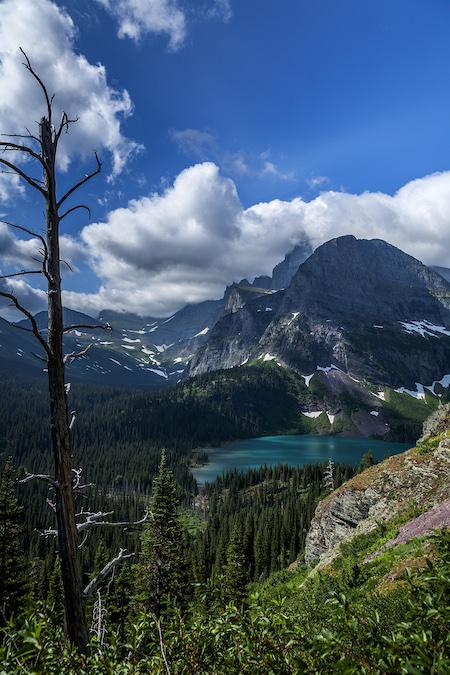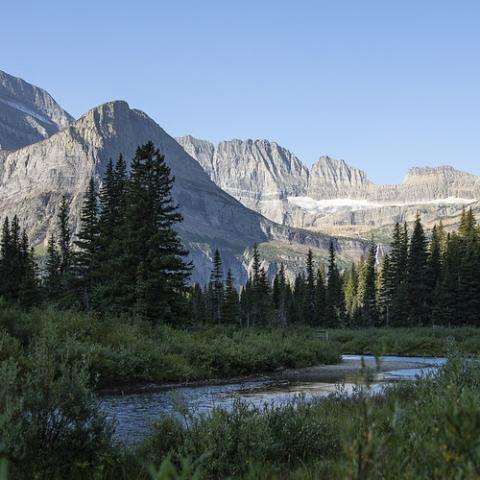
Upcoming Glacier National Park program will look to the high country for birds/Rebecca Latson file
Wolves, grizzlies, moose, and mountain goats are the charismatic megafauna at Glacier National Park in Montana, but there are other wildlife, too, and while not "mega," they can be just as charismatic. Two upcoming programs at Glacier will help you learn more about the park's birds and bats.
On July 10, rangers will lead an evening field trip in West Glacier to teach participants about the bats that make their home in the park. The event, which is free and open to the public, will run from 8 p.m. until around 11:30 p.m.
Participants on the late-night field trip will have a chance to learn more about bats, their amazing adaptations, and how researchers capture and identify bats. Participants will visit a site known for bat activity and will use electronic equipment to detect the ultrasonic calls of bats flying overhead. Researchers also will deploy mist nets to capture bats for closer inspection.
Lisa Bate, a wildlife biologist at Glacier National Park, and Lewis Young, a retired U.S. Forest Service biologist, will demonstrate the equipment and handle bats captured in mist nets. They will also share information about bat adaptations and threats to bat populations. Field trip participants will not touch or handle the bats.
Bats make up one-fourth of all mammalian species found on Earth. They range in size from the tiny bumblebee bat, weighing less than a penny, to flying foxes, which can have a wingspan of up to six feet. In Glacier, biologists have recorded nine species of bats, including three species added recently through the park’s ongoing bat inventory and monitoring efforts. These efforts are critical, as bats face several significant threats, including a fungus that causes a deadly disease in bats known as white-nose syndrome.
Field trip leaders ask that all attendees bring their own headlamps or flashlights, and wear sturdy shoes and suitable clothing for weather conditions. Participants also are encouraged to bring a small backpack with food, water, extra clothing layers, and bear spray. This field trip is limited to 25 participants. Registration is required. For more information and to sign up, contact Renata Harrison at 406-888-7944 or [email protected].
On July 19, the Crown of the Continent Research Learning Center and park wildlife staff will host the second Alpine Bird BioBlitz. Participants will work alongside expert birders to collect important data on the presence and abundance of 12 of Glacier’s alpine bird species, some of which are species of concern. Species of concern are those that may be declining or are in need of conservation or monitoring to understand more about their status.
The Alpine Bird BioBlitz will occur at various designated locations accessible by hiking. Participants should be able to hike moderate to strenuous trails and have some prior birding experience.
Start time for most hiking destinations will be as early as 5:30 a.m. Early morning starts are necessary to ensure bird detections. End times will vary, with some hikes lasting into the late afternoon.
The event is free and open to the public, but registration is required. To register, visit https://www.nps.gov/rlc/crown/bioblitz.htm.
For more information, contact CCRLC at (406)-888-7986 or email [email protected].




 Support Essential Coverage of Essential Places
Support Essential Coverage of Essential Places







Add comment